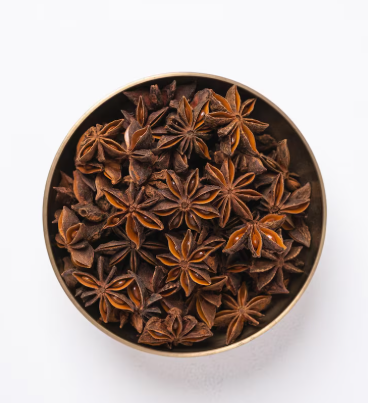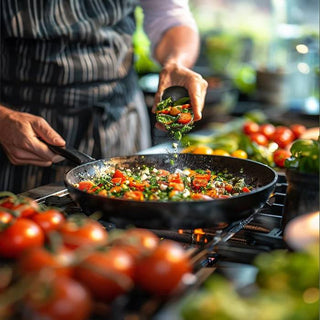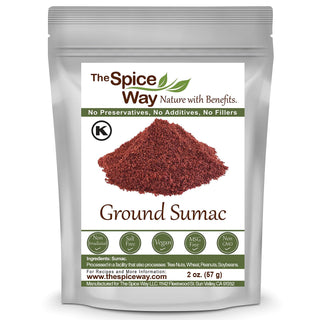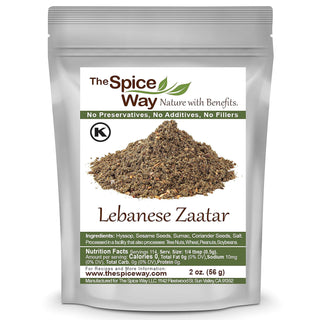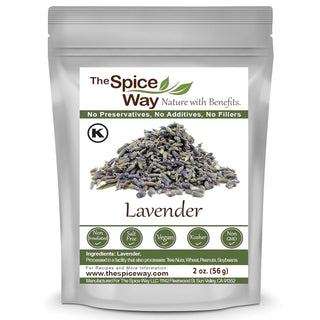When exploring the world of spices, fennel seed and anise are often confused due to their similar aroma and flavor. Both are known for their sweet, licorice-like taste, which makes many people assume they are identical. However, fennel seed and anise are not the same spice. They differ in their plant origins, culinary uses, and physical characteristics.
Plant Origins
Fennel seed comes from the fennel plant (Foeniculum vulgare), which belongs to the carrot family. The plant produces bulbs, fronds, and seeds that are all used in cooking. Anise, on the other hand, originates from the anise plant (Pimpinella anisum), a member of the carrot family but a distinct species. While both share similar botanical backgrounds, they are not interchangeable plants.
Flavor Profile
The primary reason people confuse fennel seed with anise is their flavor. Both offer a sweet, licorice-like taste due to compounds they share, but there are subtle differences. Fennel seeds have a milder, slightly earthy undertone, while anise is sharper, sweeter, and more intense. This makes anise a more pungent spice in recipes compared to fennel.
Appearance
Fennel seeds are larger, oval-shaped, and greenish-brown in color. They have ridges running along their surface and look elongated. Anise seeds, by contrast, are smaller, more curved, and have a grayish-brown color. The visual difference makes it easier to distinguish between the two when side by side.
Culinary Uses
Both fennel and anise are widely used in global cuisines, but in different ways.
-
Fennel seeds are often used in Mediterranean, Indian, and Middle Eastern dishes. They are added to spice blends, breads, sausages, and pickles.
-
Anise seeds are commonly used in European and Middle Eastern cooking, particularly in baked goods, desserts, and liqueurs such as ouzo and anisette.
Substitution in Recipes
While Fennel seeds and anise share a similar flavor profile, they are not always perfect substitutes. Anise’s more pungent taste can overpower a dish, whereas fennel seed adds a gentler sweetness. If substituting, it’s best to use less anise than fennel to avoid overwhelming the recipe.
Role in Beverages
Another significant distinction lies in how the two spices are used in drinks. Fennel seeds are commonly infused into teas, added to spice blends for chai, or steeped in hot water as a refreshing herbal infusion. Anise, in contrast, is a star ingredient in alcoholic beverages such as pastis, absinthe, and sambuca, prized for its strong and aromatic flavor. This highlights how the intensity of anise lends itself to concentrated drinks, while fennel seeds works better in gentler infusions.
Pairing with Other Ingredients
The way these spices interact with other ingredients also sets them apart. fennel seed pairs exceptionally well with savory dishes, complementing meats, root vegetables, and even seafood. It blends smoothly into spice rubs and marinades without overpowering them. Anise, by contrast, shines in sweet contexts. It enhances flavors in cookies, pastries, and cakes, where its sweetness complements the sweetness of sugar and butter.
Use in Seasonings and Spice Mixes
Cuisines around the world incorporate fennel and anise in different ways. Fennel seeds often appears in curry powders, Chinese five-spice powder, and pickling spices. It adds warmth and subtle sweetness to layered spice blends. Anise is more frequently used in baking spices or as a stand-alone flavor, particularly in candies, lozenges, and traditional festive breads.
Storage and Shelf Life
Although both spices are derived from dried seeds, their shelf life and storage practices are similar, but worth noting. Fennel seeds, being larger, tend to retain flavor slightly longer than anise seeds. Both should be stored in airtight containers, away from light and moisture, to preserve their aroma. Ground forms of either spice lose flavor much faster than whole seeds, so storing them whole is recommended for longer-lasting taste.
Distinguishing in the Kitchen
If you’re ever unsure whether you have fennel seeds or anise in your pantry, examine the seeds closely. Fennel seeds are elongated, pale green to brown, and slightly ridged. Anise seeds are shorter, curved, and usually darker brown. Their fragrance can also give them away: fennel is sweet but mellow, while anise has a sharper, more pronounced aroma.
Fennel vs. Anise in Global Cuisines
Across different food cultures, fennel and anise have distinct roles. In Indian cuisine, fennel seeds are often dry-roasted and added to curries, rice dishes, and spice blends. They are also commonly served plain as a flavor enhancer after meals. In Italian cooking, fennel seeds are a classic addition to sausages and tomato-based sauces.
Anise, however, finds its most substantial presence in European and Middle Eastern kitchens. It flavors breads, cakes, and holiday cookies such as Italian biscotti or German pfeffernüsse. In the Middle East, anise is a beloved flavor in traditional pastries and in hot spiced drinks. The cultural associations of anise are more closely tied to sweets and beverages, whereas fennel is more versatile, often leaning toward savory cooking.
Aromatic Intensity
Because fennel seeds are milder, cooks often use them in larger quantities to bring out their flavor. They blend easily with other spices, allowing for flexibility in seasoning without overpowering the dish. Anise, with its concentrated sweetness, is usually used sparingly. A small amount goes a long way, particularly in baking or drink recipes. This difference in intensity is one of the most significant factors to consider when choosing between them.
Role in Traditional Confectionery
Confectioners and bakers have long used both fennel and anise for their aromatic sweetness, but with distinct results. Fennel seeds are sometimes coated with sugar and enjoyed as small sweets or sprinkled onto bread for added crunch. Anise, in contrast, is often the core flavor in candies and lozenges, lending a bold, unmistakable taste that defines many old-fashioned sweets.
Culinary Pairing Suggestions
-
Fennel seeds work best with pork, lamb, root vegetables, lentils, cabbage, citrus, and fresh herbs.
-
Anise Pairsbest with honey, almonds, chocolate, coffee, cinnamon, and baked doughs.
Chefs often pair fennel with hearty, earthy ingredients, while anise tends to complement rich, sweet, or spiced flavors.
Influence in Liqueurs
One of the most striking differences is their role in alcoholic beverages. Anise dominates classic spirits such as absinthe, ouzo, sambuca, and raki, where its strong licorice note creates a defining character. Fennel seed, while also used in beverages, tends to appear in softer infusions or flavoring blends rather than being the central note.
Wrapping It All Up
Although fennel seed and anise share a family resemblance in taste, they are not the same. Their distinct origins, flavor intensity, appearance, and culinary roles set them apart. Fennel is versatile, widely used in both savory and sweet dishes, while anise takes a bolder, sweeter role in confectionery and beverages. Knowing their differences allows cooks to confidently choose the right spice and bring out the intended character in their dishes.
FAQs
1. Are fennel seeds and anise the same spice?
No, fennel seeds and anise are not the same. They originate from different plants and vary in terms of flavor strength, appearance, and common culinary uses.
2. Why do fennel and anise taste so similar?
Both have a sweet, licorice-like flavor due to similar aromatic compounds, but fennel is milder and earthier, while anise is sharper and sweeter.
3. Can fennel seeds be substituted for anise in recipes?
Yes, but with adjustments. Fennel is milder, so you may need more of it, while anise should be used sparingly as it has a more pungent taste.
4. How can I tell fennel seeds apart from anise seeds?
fennel seeds are larger, oval, and greenish-brown, while anise seeds are smaller, curved, and grayish-brown with a more intense aroma.
5. Which cuisines use fennel and anise the most?
fennel seeds are popular in Indian, Mediterranean, and Middle Eastern dishes, while anise is widely used in European and Middle Eastern baking, candies, and liqueurs.
